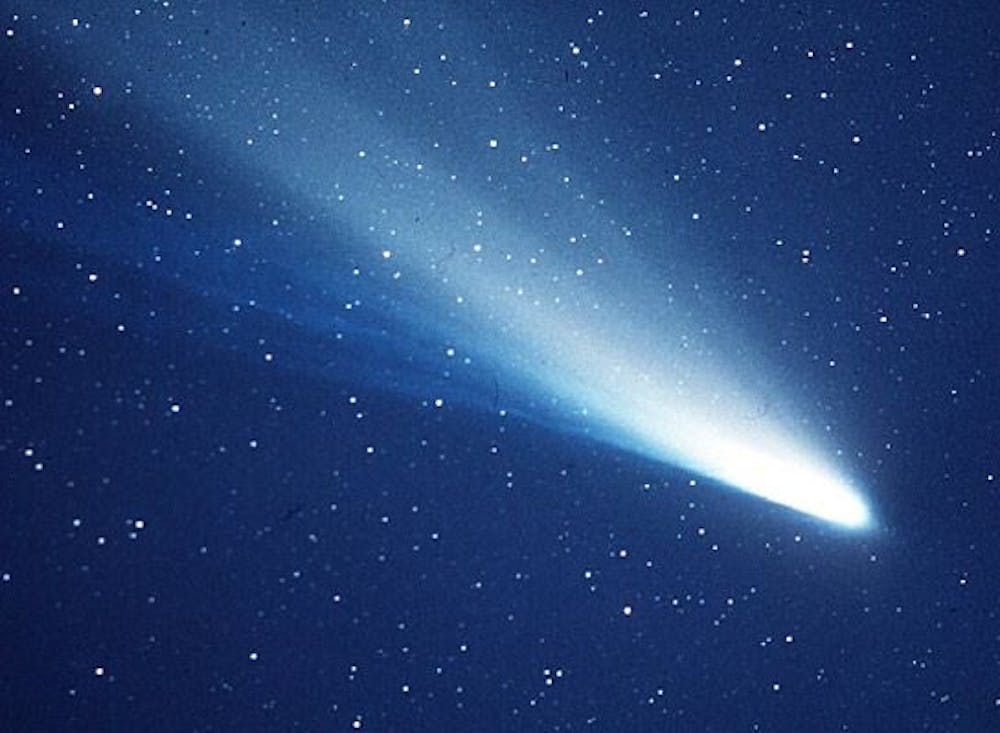On March 22, 1997, Comet Hale-Bopp made its closest approach to Earth. Over the course of 18 months, from May 1996 to April 1997, millions of onlookers around the world watched the icy mud ball grace the sky with their naked eyes. As a majority of the student population at the University of Memphis are Gen-Zers, it's quite possible you were being born around the time of Comet Hale-Bopp's visit, or perhaps your parents were star-gazing while on a date. By April 9, 1997, 69% of Americans had seen Hale-Bopp, and it remains the most observed comet in history. Twenty-seven years later, it appears Earth's inhabitants will get another chance to see a comet with their naked eyes, and this one bears a slightly more sinister name.
The 'Devil comet' is a massive comet that will soon be passing by Earth for the first time in more than seven decades, according to astronomers. This comet got its name due to its trail of gas and dust, which resembles devil horns. However, the scientific name for it is 12P Pons-Brooks, named after Jean-Louis Pons and William Robert Brooks.
The 'Devil comet' has been making headlines due to its trajectory towards Earth. At its closest point, the comet will be about 144 million miles away from the Earth. To put this into perspective, the distance between the Earth and the Sun is 150 million miles. Experts from NASA as well as other scientists and astrophysicists assure the public that the comet does not pose a threat to the Earth, nor is it expected to come anywhere near Earth's atmosphere. Carolina-based NASA Ambassador Tony Rice said space rocks pass the Earth every day, and the only thing igniting this story are the Beelzebub-looking devil horns.
While the 'Devil comet' may not mean doomsday, it should provide some of Earth's inhabitants with a rare opportunity to view a visible comet and a solar eclipse at the same time.
Comets are often confused with meteors, but there are distinctive differences. A meteor, or shining star, looks similar to a comet, but meteors are significantly closer to Earth, and they also burn up in Earth's atmosphere. Another distinctive difference between them is that meteors can only be seen for a brief period, while comets can be seen for weeks or even months. Lastly, it is significant to note that comets come back, and meteors do not.
As far as being able to see the 'Devil comet,' it will be closest to the Sun in April of 2024 and closest to the Earth in June of 2024. Despite the comet's proximity to Earth, visibility may still be limited as the comet can only be seen by the naked eye in dark places.
"It's lucky that we get to see things like this," said Ben Keller, a numerical astrophysicist and physics professor at the University of Memphis. Keller added that there will be a crowdfunding campaign to raise $6,000 for a sidewalk telescope on campus hosted by the University of Memphis' crowdfunding platform, MomentUM. The campaign will run until Dec. 6.
Another chance to catch the comet is during the total eclipse on April 8, 2024, because "when the eclipse is total, the sun is dark, and you can see the comet," said Joanne Rhodes, an instructor in the Department of Physics and Materials Science at the University of Memphis.
Comets can be appreciated by anyone and are encouraged by the space community to be observed, as visible comets only come around every 20 to 30 years. Although this comet will not be as bright as Halley's Comet or Hale-Bopp, it should still be a magnificent sight to see.






